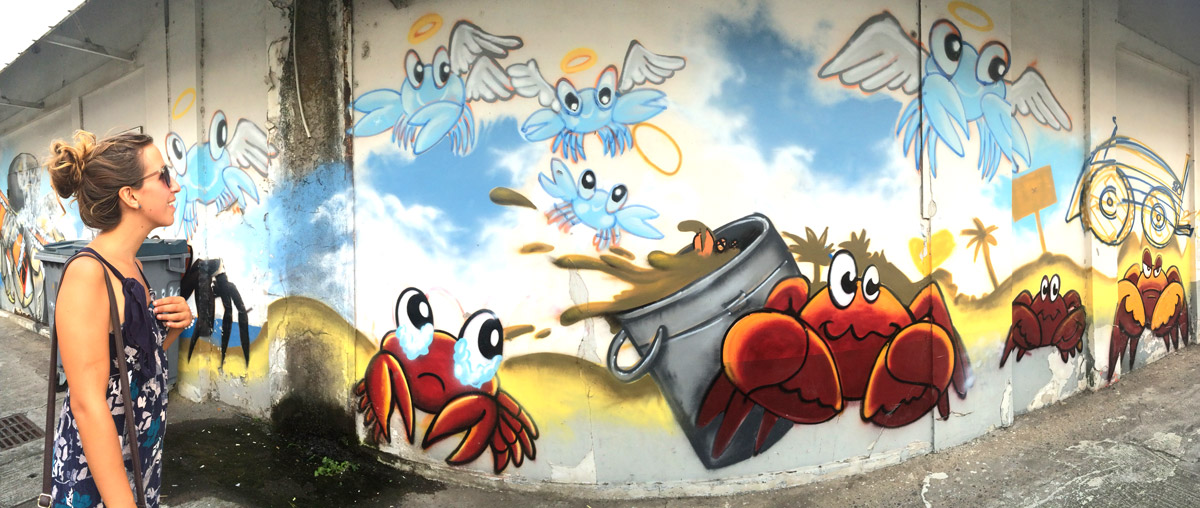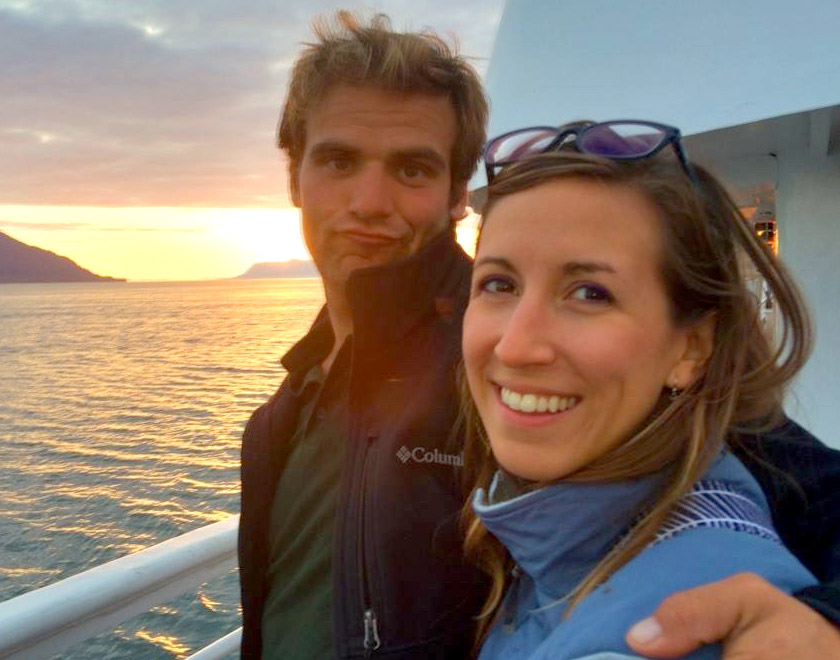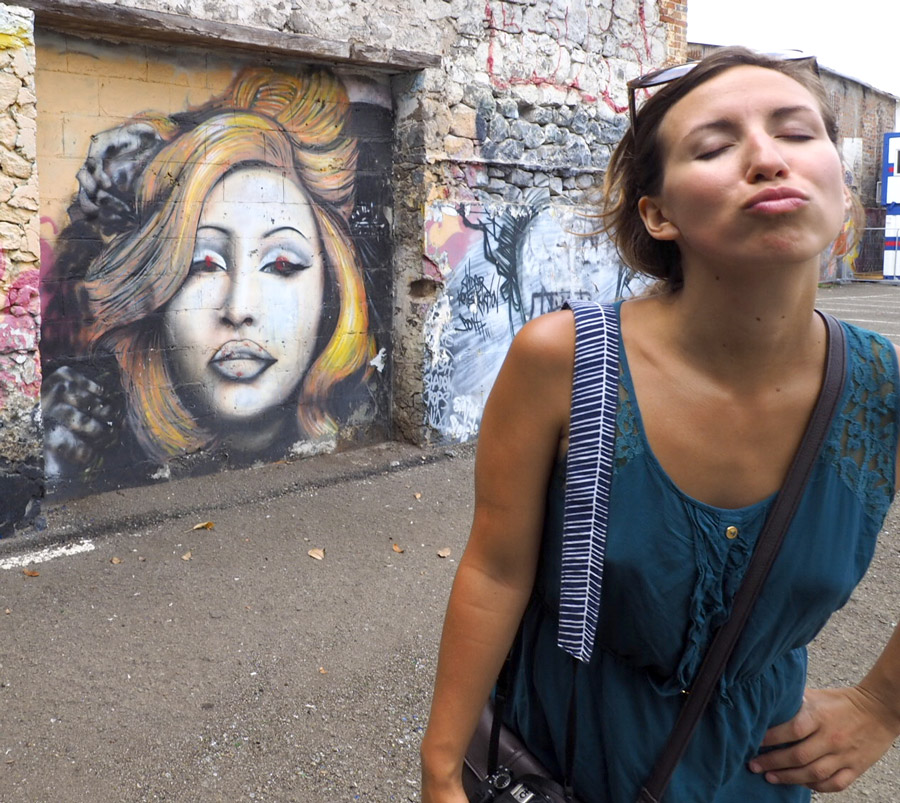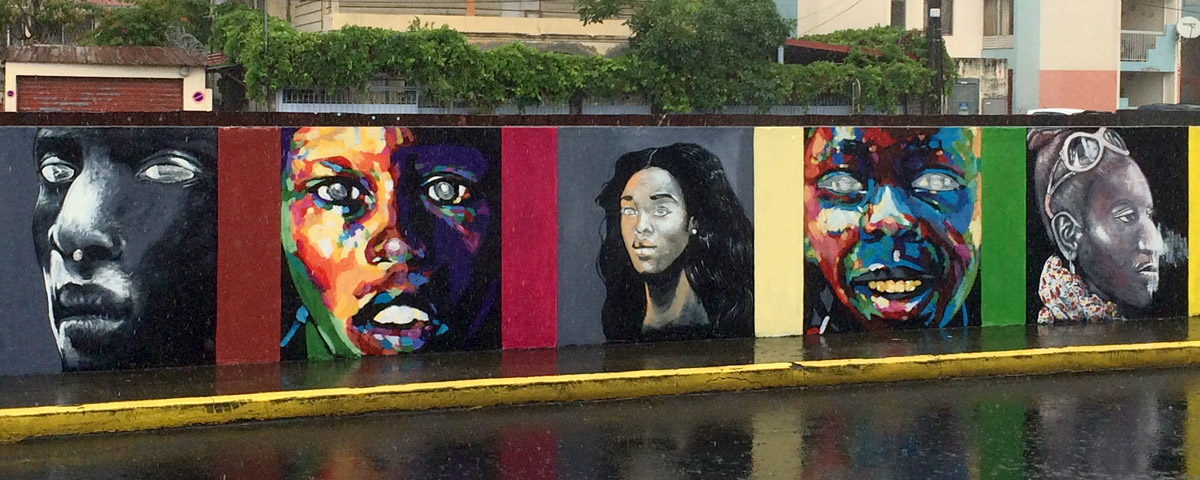
When you walk down the street and see something in a crazy spot, there’s something powerful about that. The street will always be an important part of getting art out there for me. – Shepard Fairey
What is this image telling us? Julia and Brian wanted to know; but it was Sunday in Fort-de-France, Martinique so there weren’t many people around to ask, plus our young couple didn’t speak French.

I first met Brian in 2012 when he was the videographer on a National Geographic expedition ship. It took three years to catch up with him again. Now Julia has become part of Brian’s life; they work on the Nat-Geo Sea Bird, ranging the Pacific Ocean from Alaska to Panama.

During time off work, they return to his boat to continue exploring the islands and waters of the Caribbean Sea. On this Sunday morning, moored off Fort-de-France, Julia and Brian took their dingy ashore for shopping.
They couldn’t miss the many crabs.
“The entire city is covered in paint, be it commissioned or not, and much of it is very interesting.
“The crabs stood out to us because never in my whole life of looking at graffiti had I seen such renditions of crabs.
“The French West Indies are filled with people who love to create, they are natural artist.
“What these mischievous crabs are up to is beyond me, but I have a feeling the person who painted them not only enjoys crab, but enjoys watching them move and live and be extremely helpful parts to the ecosystem.
“This attitude is what gives me hope for our generation and future generations and is the attitude we all should adopt and strive to instill in those around us.”
Brian sees hope in this painting for both the artist and the future generations. Brian’s thoughts are valuable to me and keep pulling me back to John Muir’s idea that nothing can be picked out without finding, “… it hitched to everything else in the universe.”
Brian’s eye for the perfect image is remarkable. Some people take pictures, while others, like Brian, pull you into the scene to make the image part of you. His images of local street art place me in the picture, making me part of the story.

Even if none of us ever stand in that spot, the images allow us to experience the culture, the people and even the soul of some distant city.
I had not looked deeply at street art until Brian sent me some examples. He has been collecting images for years – looking for answers to what these artist are trying to say. Now I look at street art differently – with more interest – asking the same questions.
The images Brian creates are adding drops to the bucket of our lives in connecting us to the story in new and exciting ways.

What is your view of street art, is it necessary – or just graffiti – vandalism? What have you seen painted on the walls of buildings as you travel. Did it have a message? Do you have pictures of street art – will you share them with us?
As always, the conversation start here.
“In the ordinary choices of every day we begin to change the direction of our lives.”
– Eknath Easwaran
Epilogue
Street art can take on many forms. Some is very poignant like the images on the Palestinian side of the separation wall. Warning: This video is intended for mature audiences only:

Great video Brian! I think art is man’s most powereful tool of communication. Where
words can be misunderstood or misinterpreted art can overcome that divide and move us in ways like nothing else. We can always use more art especially on the street so people can be surrounded and be engaged by it. I’m not a fan of destructive graffiti that
defaces a beautiful building or structure but in some cases that may be just what it takes to make one’s voice heard.
Bruce, this is a fascinating topic. The comment spoken by Christina perfectly shares my sentiments and contribution to this discussion.
Sharing your thoughts will make me more attentive to the messages and beauty surrounding me.
Thank you.
Christina,
Thanks for your comments. Yes, all art forms are powerful. It has taken me years to come to this realization, but I am glad I have arrived. Allowing public expression encourages involvement in the process – that is important.
The still images and commentary belong to our friend Brian Christiansen and are used with his permission. The epilogue video, titled Graffiti on the Separation Wall is by Justin Healy and is available on You Tube.
Brian is a rare talent….
–– Bruce
Ella,
Thank you for joining the discussion. Your https://www.facebook.com/TheGoodSamaritanSocietyInitiativeOfHope?pnref=lhc
continues to put drops in the bucket for so many. The world is better for the many talents assembled.
–– Bruce
Listening to MPR this am and they were talking about art and the positive things that happen in the brain when viewing art. Man was drawing on the caves in southern France over 30,000 years ago so art of all kinds has been important to man over the ages.
Mary Lou –
Yes, we have adorned our surroundings, and our bodies, for a long time. A question for me is when does street art cross a line and become graffiti? Your thoughts?
– Bruce
You do raise an interesting question. I have always felt that graffiti was a negative, but somehow it does tell a story whether we want to listen or not.
Bruce,
What a lovely piece. Street art (from political statements to the sheer exuberance of youth expression) has always captivated me. Some of the best I’ve seen was in Trinidad.
Thank you for sharing this. I’m back in Charlotte again at the moment and would love to reconnect with you. -C
Carol,
Thanks for your kind words and for following the conversation at Choices Do Matter.
Coffee anytime, and of course, Julia’s is the BEST. But you know that from my next story.
– Bruce